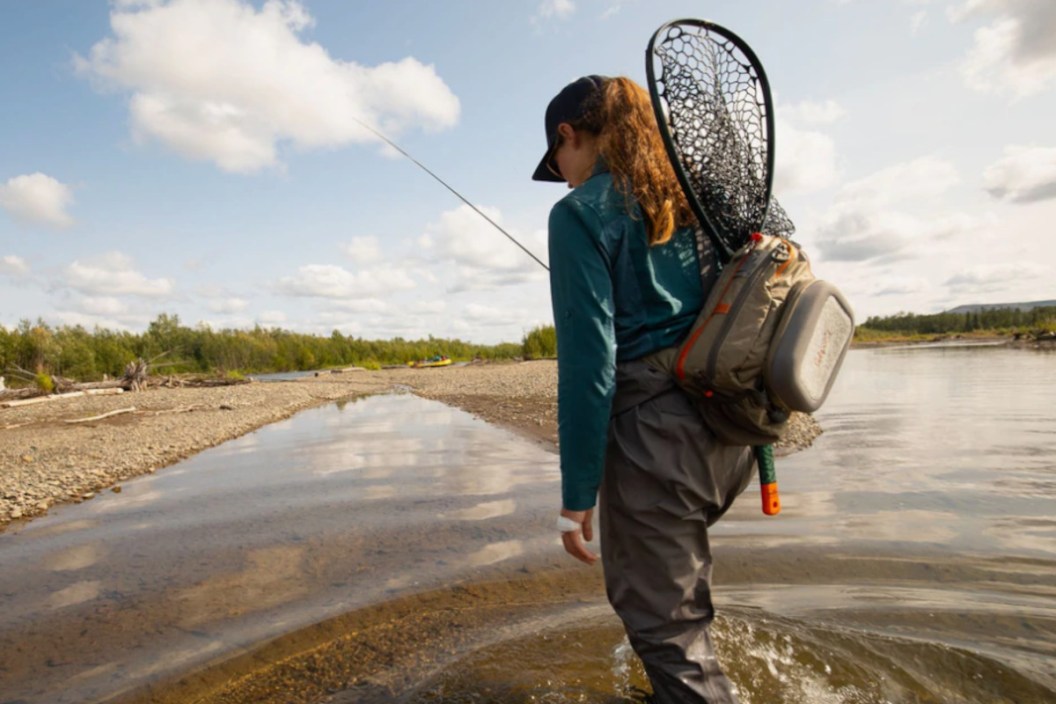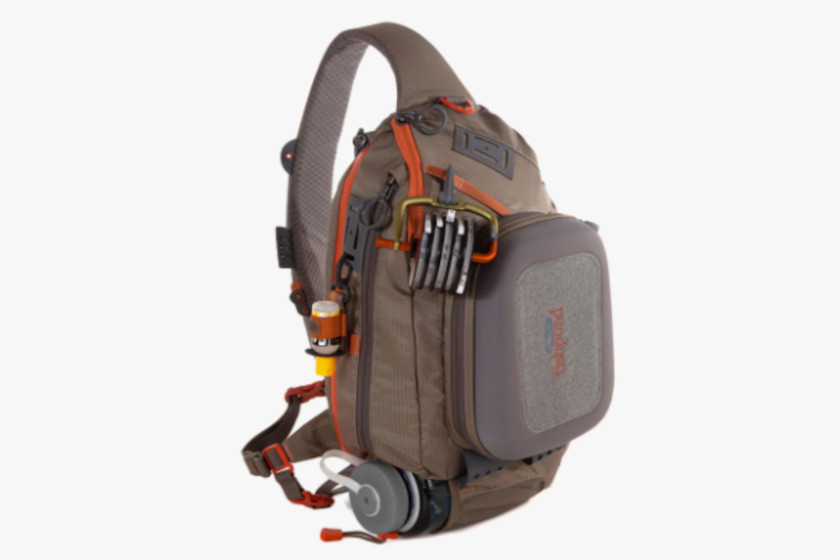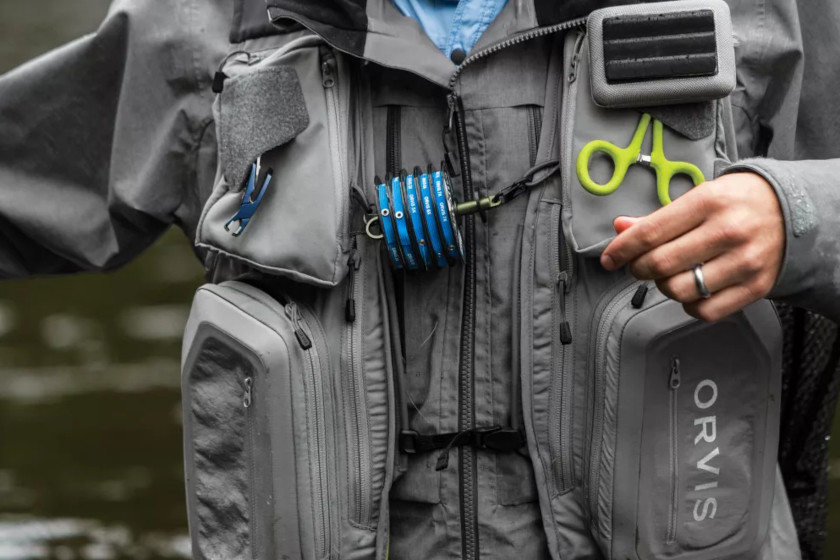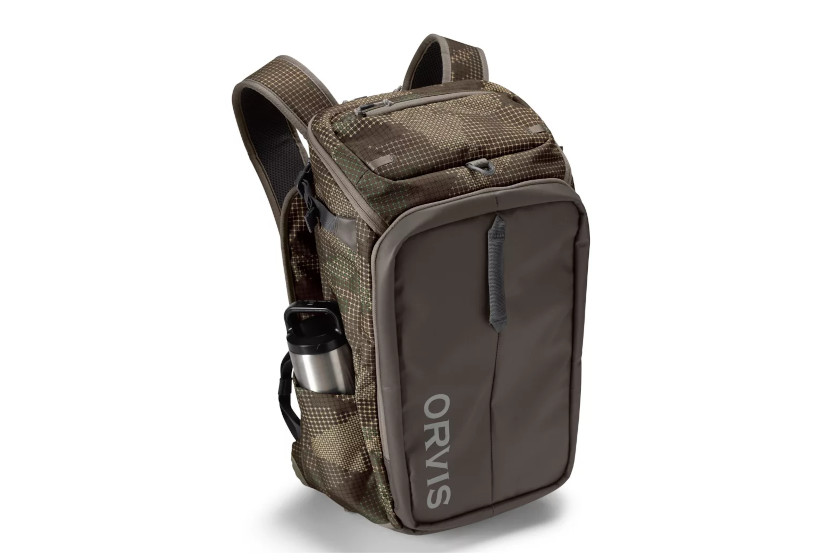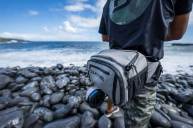Growing up watching my old man, the classic fly fishing vest just seemed like a staple to his appearance, I never saw him on a stream without it. It was like seeing a carpenter without his toolbelt, he would have felt naked otherwise. I didn't completely inherit his love of vests. Instead, I tend to use my sling pack far more often than I use a vest. There's a convenience and comfortability aspect for me to have a breathable, lightweight sling where I can easily access all the gear and equipment I need quickly, without the awkwardness of stuffing fly boxes into my vest pockets. Don't get me wrong, I think the vest and fly backpack all have their place in fly fishing, and one might fit your needs slightly better than the others, or you might switch it up depending on the fly fishing trip that you're on. Either way, there are some great advantages to all three. Today we'll examine the different pros, cons, and scenarios where I like to make use of each of these for keeping organized in my favorite trout stream. If you cannot afford to pick up all three types right now, this should give you some direction on what you should be looking at based on your style of fly fishing.
The Sling Pack
The sling pack is a great, versatile piece of gear that I generally use exclusively on all my alone trips. Mostly because everything I need is conveniently located and can be accessed by a simple swing of the strap. Most modern sling packs have an integrated tippet spool compartment, forcep-specific pockets, and more than enough interior room for my fly boxes. I love the sling for my solo outings because there isn't too much bulk. This allows me to cast freely, and the storage provides me with everything I need for a day on the water at an arm's length. Fishpond came out one I really like, the Summit Sling 2.0. It is a do-it-all sling and incorporates tool attachments for retractors, forceps, and even dry fly floatant holders. There is even an integrated fly fishing net sleeve that can't be found on most sling packs. This is a $120 sling with the functionality of one costing far more.
If there are any cons to a sling pack, it would be that on longer fishing trips, a backpack will likely be more comfortable and provide better storage space for additional gear. As I mentioned earlier, many sling packs typically do not include space for your net, which can also be a negative. However, a sling pack is a great option for anyone who wants a bit more storage than a traditional fly vest without the incredible bulk of a full-on backpack. It's a sort of middle of the road option when it comes to fly gear storage on the water.
Vest
Fly fishing vests have gotten more advanced over the past few years, which is exciting for avid anglers because the new functionality meets a classic look that we all love. Not to mention, manufacturers have gotten a lot better at slimming down the vests, as their heavy bulk seemed to be one of the biggest issues with vests in years past. Our forefathers could have only dreamed about the ultralight materials and functionality of fly vests today. Orvis offers the Pro Vest which is a must have for any angler that spends a lot of time out on the water. It's very lightweight and everything you need is conveniently placed directly in front of you for easy access when you need it. While vests are great to wear on most fly fishing trips, they tend to have less than ample storage space for multiple fly boxes, and they have a history of feeling bulky and restricting while casting, especially on those chilly days when already you have multiple layers on. For that reason, they are more suited for warmer weather than packs or slings.
When selecting a vest, think about more than fly fishing gear storage options. Think about how well it will fit over your waders, and how comfortable it will be during a long day on the water. And perhaps most importantly of all, how well will it repel rain? It's going to make your fishing more pleasant if you're not soaked to the bone during a hot bite.
Backpack
Having a fly fishing backpack is obviously the ideal choice if you're an angler that likes to bring a lot with you on your fishing trips. Most newer fly backpacks can easily carry several fly boxes, a net, an additional rod, extra reels, spool winders, the list goes on. There's an evident advantage to carrying a backpack in not having to compromise on what gear to bring. If you're a minimalist, this is not the option for you. The Orvis Bug Out pack and the Simms Flyweight pack are two that I bring with me on a lot of my long trips where it never hurts to bring extra gear. As a bonus, I can pack extra layers just in case the weather changes on me, carry a lunch for my all-day outings, and even pack in some larger streamer boxes that just won't fit a sling pack or vest. Most packs are now relatively lightweight to help lessen the burden of wading with extra bulk, although they still aren't as light and comfortable as a sling or even a vest. Also, the storage pockets seem to be less convenient to access. Odds are you're going to need to take it off to dig around to get at what you need, which can feel like a time waster when the bite is hot. But on a multiple day trip, the storage space is worth it.
When selecting a backpack or chest pack, look closely at the shoulder straps. A pack with padded shoulder straps will keep you on the water longer than one without. It's almost always worth considering packs with bonus storage areas for a hydration bladder or water bottle too. Especially if you're fishing at high elevations in a mountain state. Keeping hydrated is an important part of avoiding altitude sickness, and full-size packs usually have more storage for things like that.
Whether you're using a sling, vest, or backpack, bringing the right gear is crucial to your success on the stream. Invest in good equipment and it will return dividends. This may seem like an odd bit of advice, but if you can, go in a store and try on the pack or vest you're thinking about. Make some mock casting motions in the store to see how it feels making your normal movements. You may look strange, but it will help you figure out if your chosen storage will be comfortable or not before you hit the water. Find a setup that works best for you and incorporate it into a pack that feels comfortable casting on the river.
